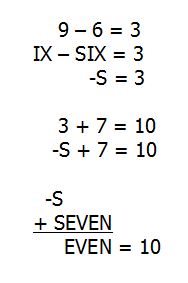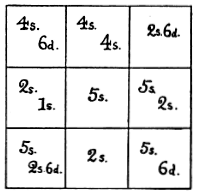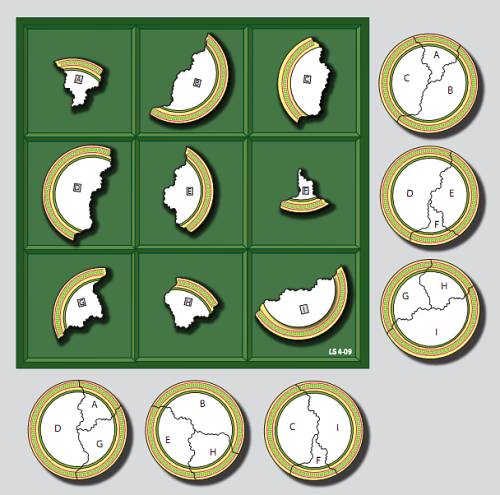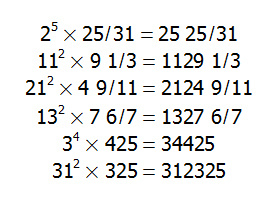
Science & Math
Cash and Carry
A favorite problem of Lewis Carroll involves a customer trying to complete a purchase using pre-decimal currency. He wants to buy 7s. 3d. worth of goods, but he has only a half-sovereign (10s.), a florin (2s.), and a sixpence. The shopkeeper can’t give him change, as he himself has only a crown (5s.), a shilling, and a penny. As they’re puzzling over this a friend enters the shop with a double-florin (4s.), a half-crown (2s. 6d.), a fourpenny-bit, and a threepenny-bit. Can the three of them negotiate the transaction?
Happily, they can. They pool their money on the counter, and the shopkeeper takes the half-sovereign, the sixpence, the half-crown, and the fourpenny-bit; the customer takes the double-florin, the shilling, and threepenny-bit as change; and the friend takes the florin, the crown, and the penny.
“There are other combinations,” writes John Fisher in The Magic of Lewis Carroll, “but this is the most logistically pleasing, as it will be seen that not one of the three persons retains any one of his own coins.”
Related: From Henry Dudeney, a magic square:

(Strand, December 1896)
“The Archaeologist’s Nightmare”
From Lee Sallows, a geometric magic square:

The shards in each row and column produce a complete plate.
So do the diagonals!
Bank Balance
‘Well, then, good fellow, holy father, or whatever thou art,’ quoth Robin, ‘I would know whether this same Friar is to be found upon this side of the river or the other.’
‘Truly, the river hath no side but the other,’ said the Friar.
‘How dost thou prove that?’ asked Robin.
‘Why, thus,’ said the Friar, noting the points upon his fingers. ‘The other side of the river is the other, thou grantest?’
‘Yea, truly.’
‘Yet the other side is but one side, thou dost mark?’
‘No man could gainsay that,’ said Robin.
‘Then if the other side is one side, this side is the other side. But the other side is the other side, therefore both sides of the river are the other side. Q.E.D.’
”Tis well and pleasantly argued,’ quoth Robin, ‘yet I am still in the dark as to whether this same Curtal Friar is upon the side of the river on which we stand or upon the side of the river on which we do not stand.’
‘That,’ quoth the Friar, ‘is a practical question upon which the cunning rules appertaining to logic touch not. I do advise thee to find that out by the aid of thine own five senses; sight, feeling, and what not.’
— Howard Pyle, The Merry Adventures of Robin Hood, 1883
The Thinker Unthought
If materialism is true, all our thoughts are produced by purely material antecedents. These are quite blind, and are just as likely to produce falsehood as truth. We thus have no reason for believing any of our conclusions — including the truth of materialism, which is therefore a self-contradictory hypothesis.
— J.E. McTaggart, Philosophical Studies, 1934
Future Perfect

“It makes no more sense to talk of changing the future than it does to talk of changing the past. Suppose that I decide to change the future, by having coffee for breakfast tomorrow instead of my usual tea. Have I changed the future? No. For coffee for breakfast was the future. It has been objected to me that the above argument is perhaps misleading. For, it has been said, there is quite clearly a sense in which I can change the future and not the past, and this is because my acts of will determine the future and not the past — I cannot undo what has been done. Now I do not wish to deny that we can causally affect the future and not the past, and indeed this causal directionality of time is part of the problem of the ‘direction of time.’ Nevertheleless I would reiterate that the fact that our present actions determine that future would be most misleadingly expressed or described by saying that we can change the future. A man can change his trousers, his club, or his job. Perhaps he may even change the course of world history or the state of scientific thought. But one thing that he cannot change is the future, since whatever he brings about is the future, and nothing else is, or ever was.”
— J.J.C. Smart, Problems of Space and Time, 1964
Deflatable Exponents

Applied Math
Three men went into a diner, and each ordered a cup of coffee. The waitress brought the three cups of coffee and a dish with twelve lumps of sugar. Each man took an odd number of lumps of sugar, and when they had finished, there was no sugar left. How many lumps did each man take?
It requires only a few moments to recognize that the sum of three odd numbers must be odd itself. So there must be a trick somewhere, and there is.
The first man took one lump, the second man took one lump, and the third man took ten lumps. “Aha!” you will cry, “ten is not an odd number!” And then, we slyly inquire, “Do you know anyone who takes ten lumps of sugar in his coffee?”
— M.H. Greenblatt, Mathematical Entertainments, 1965
Velcro Arithmetic
122 + 332 = 1233
882 + 332 = 8833
94122 + 23532 = 94122353
741602 + 437762 = 7416043776
8832122 + 3211682 = 883212321168
Misc
- 2737 = (2 × 7)3 – 7
- Move the C in CABARET and you get A BAR, ETC.
- Van Gogh sold only one painting in his lifetime.
- “He who hesitates is last.” — Mae West
- If a man is convinced he has hypochondria, is he a hypochondriac?
(Thanks, Ben.)
